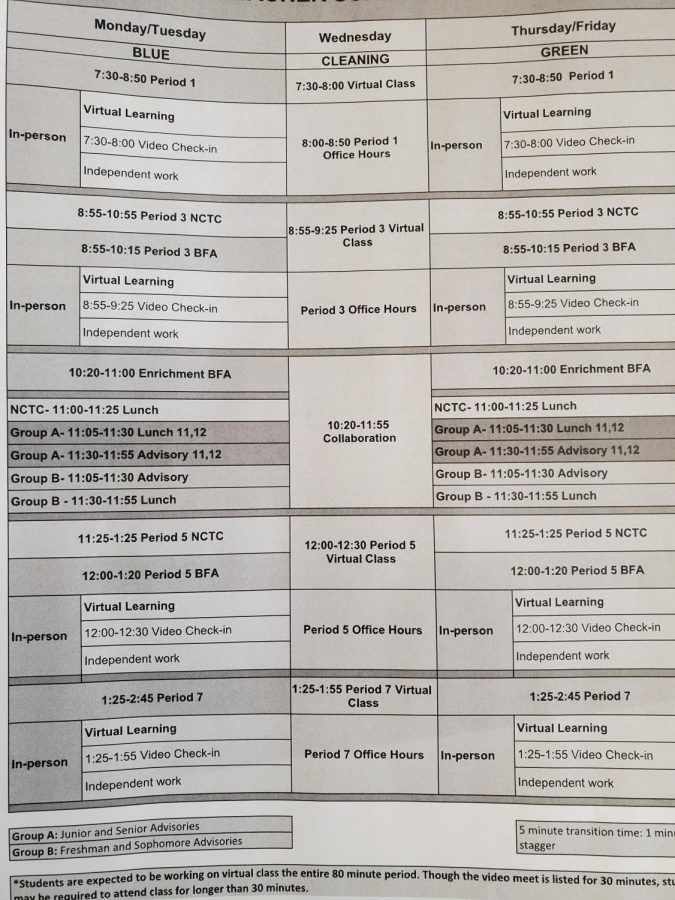4×4 Schedule Brings Simplicity at the Cost of Time, Retention and Student Excitement
February 11, 2021
In planning for the 2020-2021 school year, BFA (along with several other high schools in the Champlain Valley) decided to implement a 4×4 block schedule, where students would take only four courses at a time; to accommodate for this reduction in classes taken simultaneously, most one-credit courses would last for two quarters (one semester), and one-half credit courses would last for one quarter. Although the 4×4 schedule brings much-needed simplicity in a time of chaos, it comes at the cost of a decreased timeframe for instruction and proficiency opportunities, longer gaps between succeeding courses or exams (impacting retention) and leaves students without year-long access to their passions.
According to the Maple Run Unified School District (MRUSD) calendar for the 2020-2021 school year, under the 4×4 schedule students will receive less than 20 days of in-person instruction for quarter-one classes. For many courses that rely on routine assessments, fitting these into in-person class time for each cohort of students can make planning for teachers a challenge.
According to the American Association of School Administrators, a benefit of 4×4 schedules is that their longer class periods allow for more in-depth learning, whether that be opportunities for longer in-class labs or more detailed, uninterrupted class discussions and lectures. However, according to a study from Louisiana State University, “learning retention could be negatively impacted both by extensive elapsed time between sequential courses (e.g., Algebra I and II), and by foregoing breadth of coverage for depth of coverage in compacting the courses.” Not only does this impact to retention set students up for failure in future courses but also exams that students may not take until months after their course has completed: for example, students taking semester-one AP classes at BFA would go four months without instruction between the end of their course in January to their exam in May (including myself and my AP Calculus course).
Another impact of this gap in instruction is that many students who previously had year-long experience with their passions in the form of art and music classes will now only be in these courses for one-half of the year. According to a report done by Anthony Stanley for the U.S. Department of Education, “courses such as music performance, which require enrollment all year, may be sacrificed to meet the block schedule.” Offering these courses to students for only one-half of the school year could impact students’ happiness and attitude towards school and education.
While I completely understand (and agree) with the reasoning behind implementing a block schedule for this year’s hybrid-learning model (as I cannot imagine juggling seven courses at a time while I am learning remotely three days a week), I worry that this new schedule could become the new norm, potentially harming BFA’s AP exam performance and causing students to become less engaged in their passions. I firmly believe that the traditional schedule, or even an A/B day format (such as one that was used on Tuesdays and Wednesdays at BFA in prior years), is much more beneficial to the success and well-being of students.

